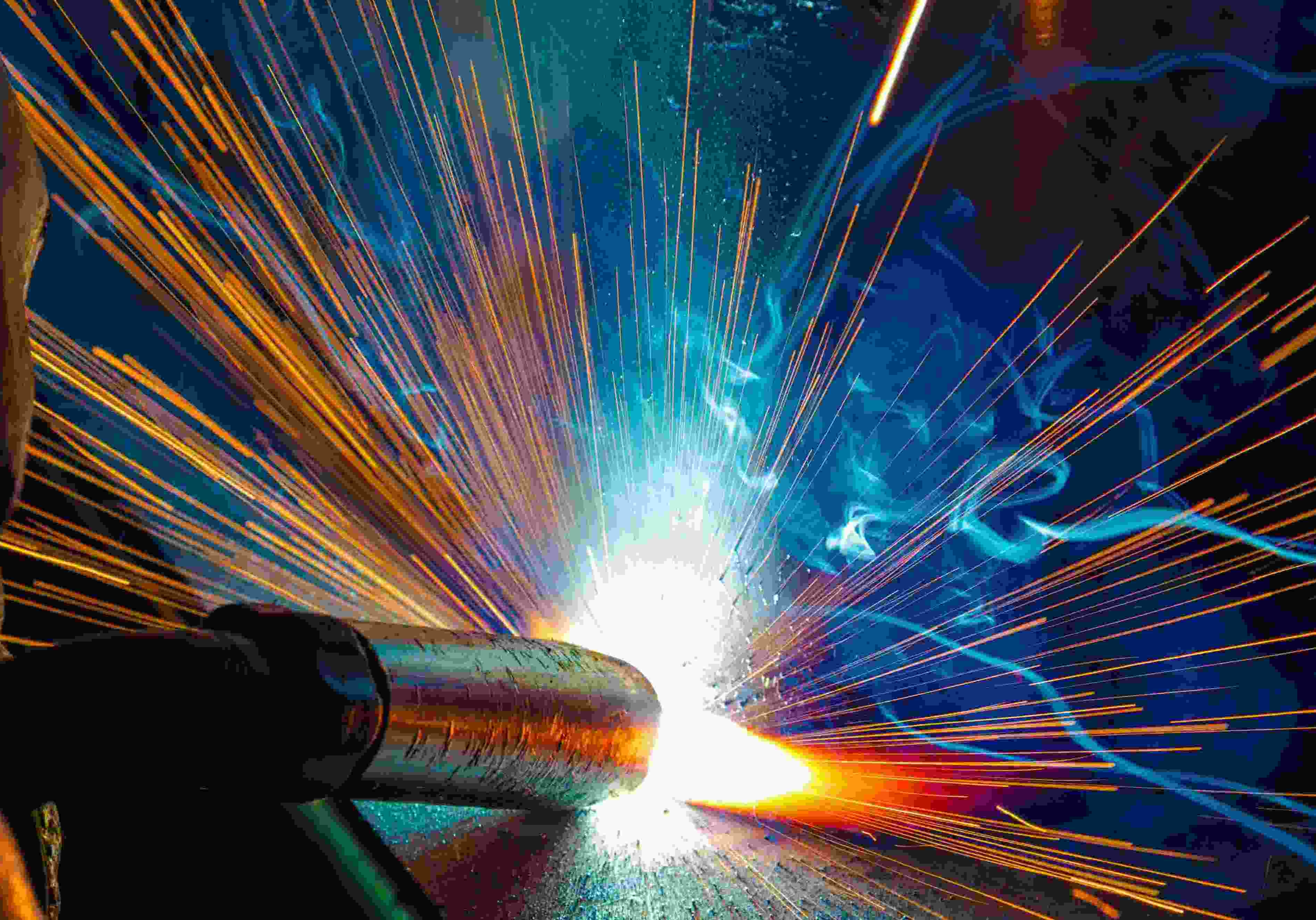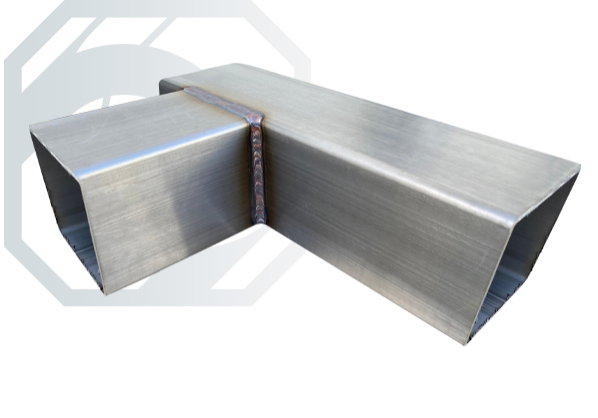With productivity levels of up to five times greater than a human, welding robots play a crucial role in various industrial and manufacturing sectors. Gaining popularity in the 1980s, these machines have transformed the welding industry, largely due to their precision, efficiency, and safety. But what exactly makes robotic welding more advantageous than manual methods? And how do you determine which type is most suitable for your specific needs?
In this article, we explore these questions further; discussing the different welding robots and which type you should choose for your project.
The Difference Between Manual and Robotic Welding
Before we begin, let’s explore the differences between robotic and manual methods. Put simply, robot welding (also known as ‘automated welding’) typically involves one of two processes. Either:
- A fully automated machine guides the metal through the entire process, from start to finish, without a human playing a role.
- Or a semi-automated machine (with a process similar to its fully automated counterparts) carries out the weld, however a person loads and removes the metal.
By comparison, manual welding relies on human operators to perform the welding process by hand. This type of fabrication is still popular in certain industries as it allows for more flexibility and adaptability - but does require skilled operators.
These two techniques differ in the following respects:
Accuracy and Precision
While manual welding has its merits, robotic welding can offer pinpoint accuracy every time, reducing the risk of flaws and defects. Robots don't tire or lose focus, ensuring a constant level of precision that's tough to match manually. They can repeat the same task over and over without any variation, eliminating human error.
Moreover, robots can access hard-to-reach areas, improving the quality of work where manual welders might struggle. So, while there's a place for the human touch in welding; for high-volume, precision-demanding tasks, you'll likely see better, more consistent results with robotics.
Speed and Efficiency
Robotic welding machinery can operate continuously, 24/7, with minimal downtime, resulting in higher productivity. Automated welding not only reduces overall welding time but also ensures consistent quality, leading to fewer reworks and thus, higher efficiency.
Imagine working at a pace you can't possibly maintain for eight hours straight. Robots can, without breaking a sweat. They're quick, consistent, and never need breaks, making them far more efficient.
In high-volume applications, such as automotive or aerospace manufacturing, robotic welding proves to be significantly faster than manual welding, meeting the demands of modern production schedules. Plus, they're programmed to follow the most efficient paths and sequences, saving time and reducing waste.
Safety Considerations
Unlike human workers, robots don't require personal protective equipment or risk exposure to harmful fumes or intense light. They're not prone to health hazards like burns, eye damage, or long-term respiratory problems. Also, they don't tire or lose concentration, reducing accident rates. Thus, robotic welding technology allows for a safer working environment as it minimises the direct exposure of workers to dangerous or high-risk environments.
However, robotic welding isn't without its safety concerns. You need to isolate the welding area to prevent accidental human contact with the robot in operation. Regular maintenance is also crucial to ensure the robot doesn't malfunction, potentially causing harm.
In essence, robotic welding can significantly enhance safety, but it requires careful management.
The Advantages of Robotic Welding
By now, it should be clear that utilising robotics in welding offers several benefits. To name a few:
- Increased productivity and efficiency: Thanks to a robot’s ability to work around the clock without tiring or needing breaks.
- Reductions in labour costs: You can get more done with less staff, reducing your expenses.
- Consistency and quality of welds: These cost-saving elements don’t come at the expense of quality, as these machines deliver precisely and reliably, reducing errors and reworks.
- Less waste: Ultimately, this means that the process will produce less waste. Manual operators may have to discard parts they mistakenly welded together or those with weak joints - whereas robots are less prone to.
The Disadvantages of Welding Robots
Despite these benefits, there are a few things you ought to consider before utilising these methods. Whether it is the right choice for you will ultimately depend on your project's requirements and robotic welding, while helpful, does have some drawbacks that could outweigh the advantages in some situations.
- Higher upfront costs: While costs per item will be lower in the long run, these machines do have higher upfront costs. Whether it is financially beneficial to invest in one will depend on how often you intend to use it.
- Less flexibility: While people can react to unexpected situations, robots cannot. When a change is required, the operator must stop its process and reprogram it.
Here at Link Business, we provide sub-contract welding services, so you can utilise this machinery without the unaffordable upfront costs. We work with a range of materials for a range of welding applications, so have the capability to meet almost any project requirements - get in touch with our expert team to find out more.
Types of Robotic Welding Processes
At this stage, you might be sold on the idea of using welding robots. But, with so many different types, you may be wondering which one best suits your needs.
Each type comes with unique features and advantages, so let's explore a few. For each, note that they can be completed manually or robots are capable of performing them automatically.
Arc Welding Robots
Arc welding is a process that joins metals together using an electric arc. It involves creating a high-intensity electrical discharge between an electrode and the workpiece, which generates extreme heat. This heat causes the metals to melt and form a weld joint when they cool down. The electrode can either be consumable, meaning it melts during the process and becomes part of the weld, or non-consumable, acting as a heat source without melting.
Resistance Welding Robots
Resistance welding is a joining process where heat is generated by passing an electric current through the contact resistance between two metal surfaces. The intense heat causes the metals to melt and fuse under pressure.
Unlike arc welding, which uses an electric arc to generate heat, resistance welding does not require any consumable electrodes or filler materials. Additionally, resistance welding is typically faster and produces stronger, more reliable welds. It is commonly used in manufacturing industries for applications such as spot welding, seam welding, and projection welding, providing efficient and cost-effective joining solutions.
These robots must apply the exact amount of pressure and current for the right duration. Too much or too little and the weld can fail.
Resistance Spot Welding Robots
Resistance spot welding is a type of welding process that involves joining two or more metal pieces together by applying heat and pressure. It uses electrical resistance to generate heat at the spot where the metals are to be joined.
Unlike resistance welding, which is a broader term encompassing various methods of joining metals using heat and pressure, these machines specifically focus on joining metals at discrete points or spots.
Tungsten Inert Gas (TIG) Welding Robots
TIG methods perform welds using a non-consumable tungsten electrode. The arc generates intense heat that melts the base metal and a separate filler rod, creating a strong and high-quality weld joint. Unlike other welding methods, TIG welding does not require a flux or shielding gas, as an inert gas, such as argon, is used to protect the weld area from contamination.
TIG welding is known for its precision, making it perfect for intricate welds or whether precise control over a heat output is required. It can also weld thin materials without distorting them.
Metal Inert Gas (MIG) Welding Robots
MIG is a welding process that uses a consumable wire electrode to join metals together. In this method, a shielding gas, typically a mixture of argon and carbon dioxide, is used to protect the weld area from atmospheric contamination.
The key difference between MIG and TIG welding lies in the electrode used. MIG welding utilises a continuously fed wire electrode, which makes it easier and faster to operate. Both have their place depending on their application, however, MIG tends to be more widely used due to its speed and ease of use.
While MIG welding is suitable for thicker materials and provides high productivity, TIG welding allows for precise control and produces cleaner welds, making it ideal for thinner materials and critical applications.
Robot Laser Welding Robots
This method uses a focused laser beam as the energy source and is renowned for its precision, making it ideal for complex or detailed tasks. The focused laser beam allows for deep penetration, ensuring a robust and long-lasting weld.
Plasma Welding Robots
Plasma welding is an arc method which employs a plasma torch to seamlessly join metals. These robots use an electrical arc and a gas, such as argon, to create plasma hot enough to melt and fuse metal.
The beauty of plasma welding robots lies in their versatility and, when used correctly, they can handle a variety of different metals.
Collaborative Welding Robots
Using a specialised wheel, CNC Grinding is a precision metal removal process that creates finely detailed pieces. This type of CNC machine employs a rotating wheel to cut and shape metals with exacting accuracy. It often involves removing material from a workpiece for sanding, finishing, or polishing purposes. It can be used for various applications, from internal grinding to surface grinding.
The Applications of Robotic Welding
With the benefits they bring, these machines are transforming various industries. To name a few examples:
- These robots aren't just for assembling cars in the automotive industry. They're used in shipbuilding where large structures require precise, long, and continuous welds.
- In the aerospace sector, they often help to manufacture aircrafts and spacecrafts, which demands extreme precision.
- The oil and gas industry benefits from robotic welding in the construction and repair of pipelines and offshore structures, ensuring reliable and durable welds for these critical assets.
- In the construction sector, robotic welding aids in creating steel frameworks, enhancing structural integrity.
Which Type of Robotics in Welding Should You Use?
Choosing the right type of robotic welding for your project can be tricky. Here at Link Business, we provide TIG and MIG welding subcontract services - perfect for all requirements. Whether your project demands the weld of an intricate or thicker material, and regardless of your choice of metal, we have you covered. Our team is always on hand to help you determine which fabrication procedure is best for you, so get in touch today for support.
Choosing TIG Welding
Our TIG welding is best suited for work which requires precision, versatility, and aesthetics. This method allows us greater control throughout the process, allowing for a more precise heat output. This makes it perfect for thin materials, without the risk of distorting or damaging them.
Also, because it uses a non-consumable tungsten electrode, the result is a concentrated arc that creates more visually appealing joints, with minimal slag or splatter.
Choosing MIG Welding
By comparison, MIG welding is a great choice when you need quick results or are working with thicker materials. It is also perfect when dealing with longer runs, difficult positions, or you require high productivity and lower costs.
With this technique, you can also easily switch between different types of metals with the same machine, making it perfect for various applications.
Do you require fabrication welding? Here at Link Business, we provide both MIG and TIG Welding, allowing us to meet almost any project requirements.
Unsure which method to use? Consult our welding guide or get in touch for support from our expert team when determining which is best.

